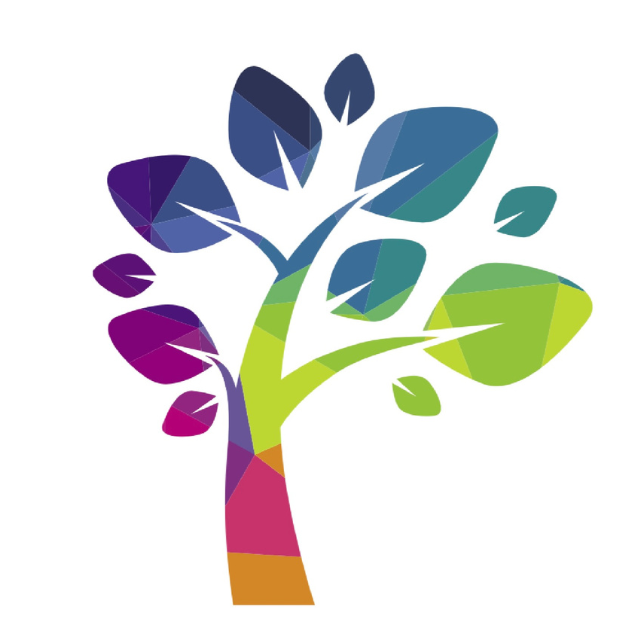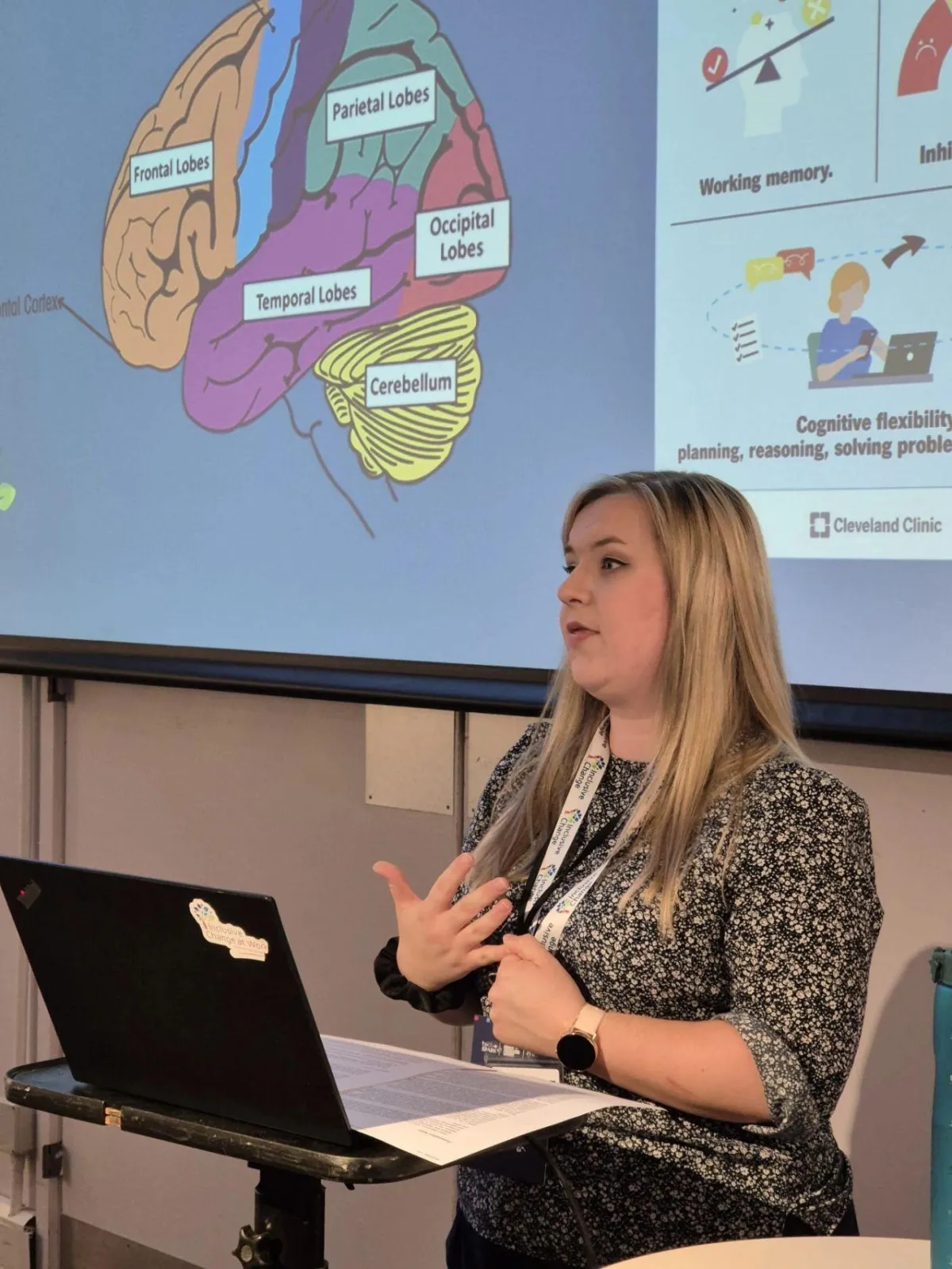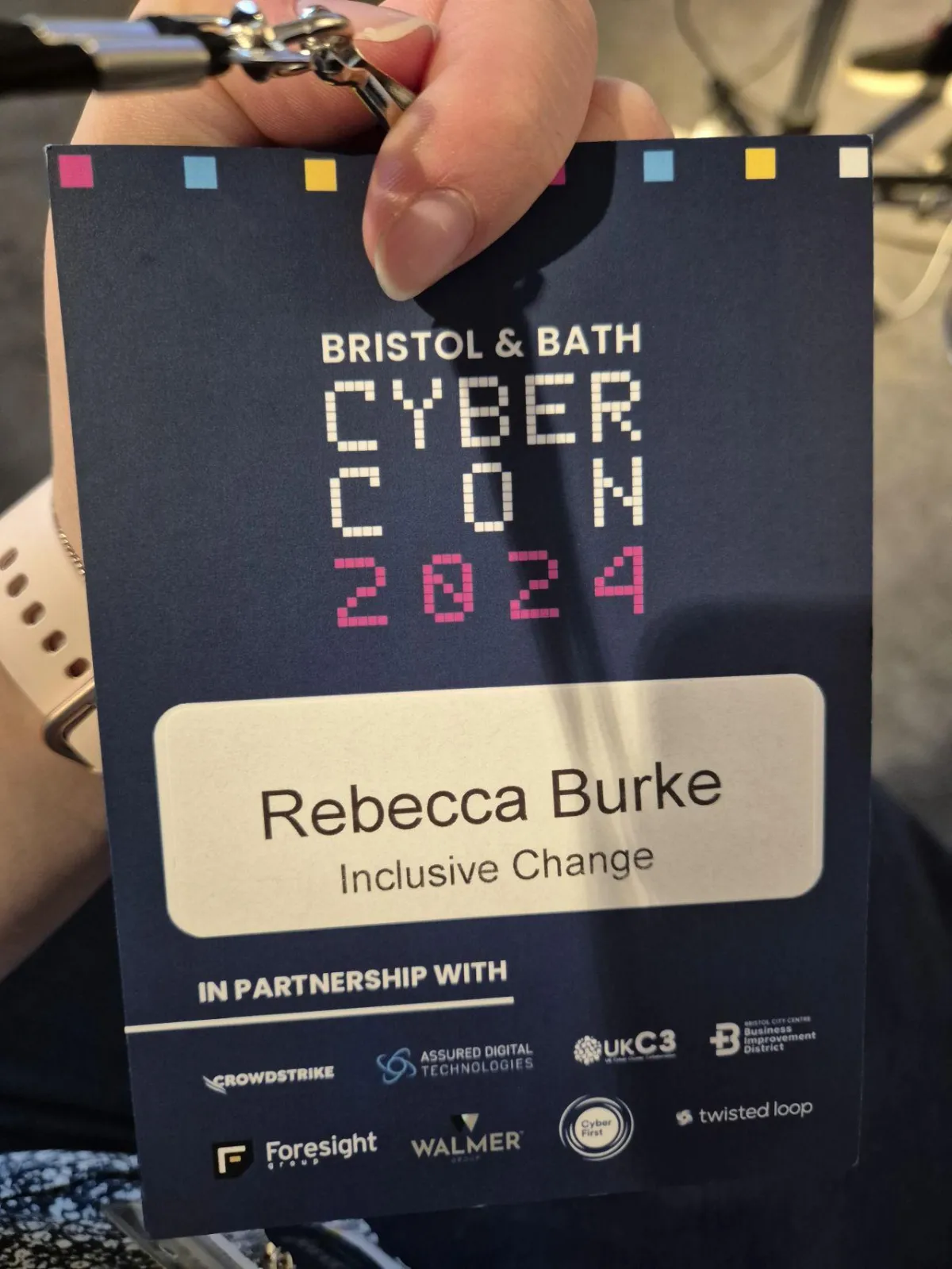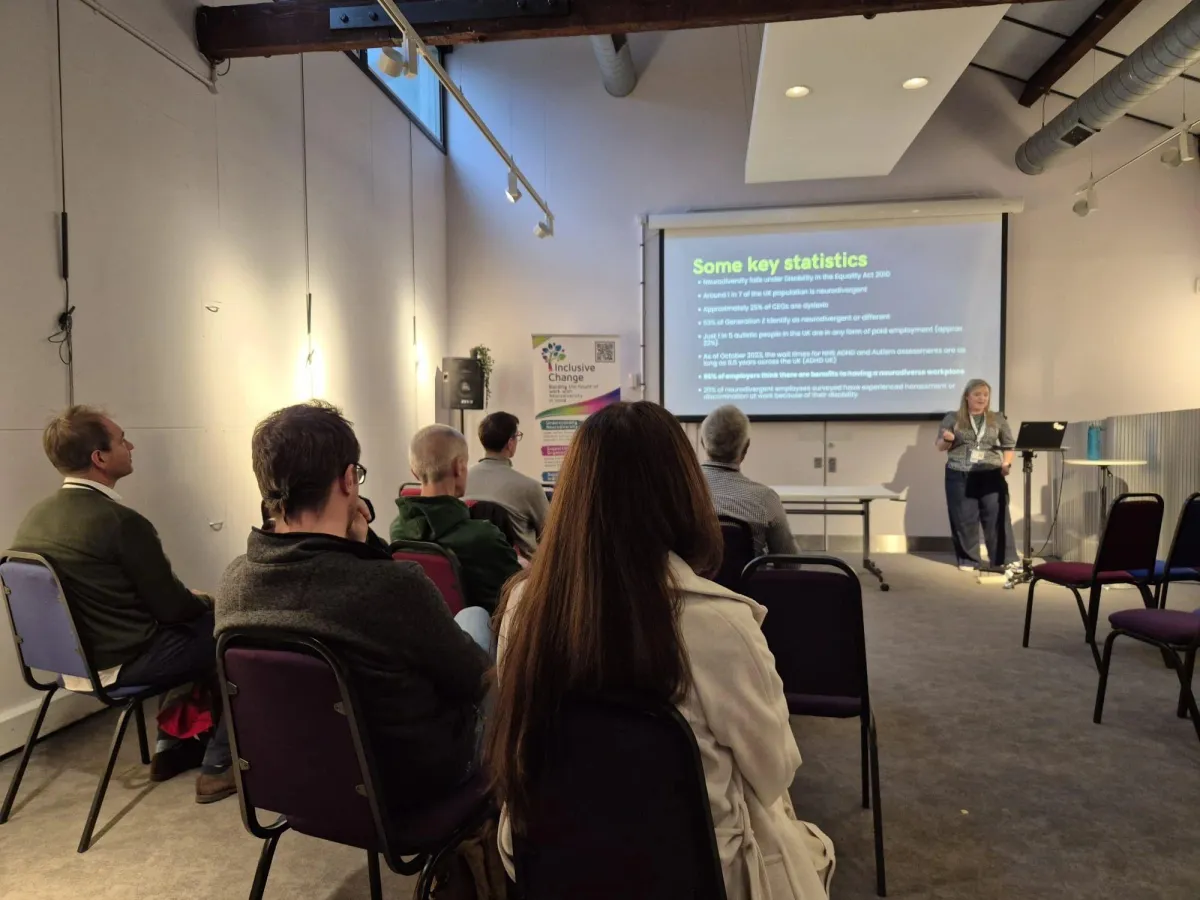
Becca Burke
Speaker
Empowering Neurodiversity in the workplace
Hi, I am Becca!
I'm Becca, a passionate advocate for neurodiversity and understanding ADHD in the workplace. Living with ADHD (combined presentation) myself, I bring a unique blend of professional experiences and personal insights to the conversation about creating inclusive, productive work environments. Equity in the workplace is especially important for us as neurodiverse folk; if given the adjustments and support we need, we can not only survive, but thrive at work.
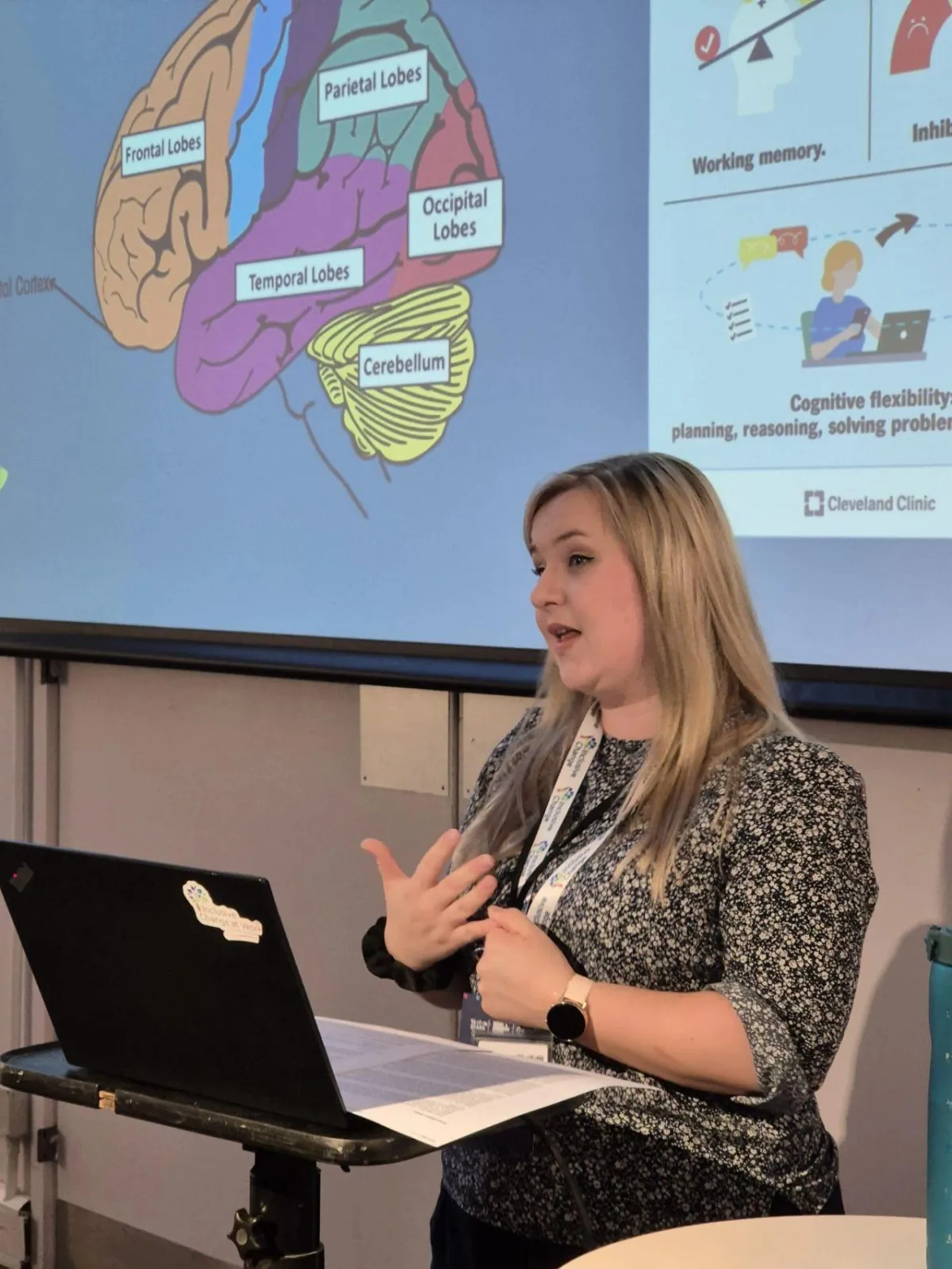
My professional journey
My career path has been varied, in true ADHD style! From my early days in customer relations to roles in sales and account management, I've always excelled in building relationships and understanding people's needs. My time at a FTSE 100 bank gave me a solid foundation for navigating large organisations and the politics of the office environment, and I then had to adapt quickly to the drastic changes of the Covid-19 Pandemic Lockdown. It was during this time, recognising the disruption to my routine, hyperfocusing on work outside of my core hours, and my inability to finish any tasks to completion, that I realised something wasn’t working for my brain.
Throughout my career, I’ve recognised that I was struggling, but never quite understood why. I saw so much of my own journey in the struggles I heard from other neurodiverse people, and I wanted to find a way that I could tangibly make a difference. After my own diagnosis in early 2024, I was inspired to become an ADHD Coach with Leanne Maskell's ADHD Works, and led to me being headhunted for Inclusive Change Ltd as Support Specialist.
My Areas of Expertise
- ADHD awareness and management strategies
- Education and training around ADHD for businesses
- Job coaching neurodivergent clients at work
- Rejection Sensitive Dysphoria awareness/training
- Business process improvement for neurodiverse workforce support
- Working with clients as a neurodiversity educated Virtual Assistant
- Neurodivergent talent recruitment and retention
- ADHD Works Level 1 Coach
Popular Discussion Topics
- Rejection Sensitive Dysphoria (RSD) & ADHD
- ADHD and the menopause
- ADHD screening in prisons
- ADHD and neurodiversity co-occuring traits
- ADHD celebrities
- Current research development
Living with ADHD
- Physiological difference in the brain
- ADHD facts and figures
- Common misconceptions
- Lived experience
- Interactive Q&A
ADHD in the Workplace
- Common challenges and strategies
- Strengths ADHDers bring to the workplace
- Challenges for us in the workplace
- Helpful strategies
- Reasonable Adjustments
- Equality Act 2010 protection
My Speaking Style
I pride myself on being engaging, insightful, and empathetic. My presentations blend personal anecdotes, research-based strategies, and interactive elements that leave audiences both informed and inspired. I like making complex topics accessible, and providing concrete, implementable solutions to common workplace challenges.
Why Choose Me?
At Inclusive Change, we understand your ‘Why,’ and meet you where you are on your journey as a business. Whether you're looking to educate your HR or leadership teams, or provide valuable insights to your entire organisation, I can help. I don’t believe that we as neurodivergent people need to change who we are to succeed; with the right support, education and awareness, we can be ourselves without compromise.
Work with me
Ready to transform your understanding of ADHD in the workplace?
Would you like me to run a workshop for you?
Get in touch using my calendar below.
Read my blog here: https://inclusivechange.co.uk/blog/b/adhd-and-me
Read more
The blog

Making Open Offices Work For Everyone
Making Open Offices Work for Everyone: A Guide to Productivity in Diverse Workspaces
Step into any open office, and you’ll see a mix of personalities, working styles, and energy levels. There’s the deep-focus worker, tucked away behind a Do Not Disturb sign, tuning out distractions. Across the room, a creative mind is bouncing ideas off teammates, filling the space with energy and enthusiasm. Meanwhile, some employees thrive in the buzz of conversation, while others struggle to concentrate amid the constant movement and noise.
Whether these differences stem from neurodivergent traits or simply individual work preferences, one thing is clear: a single work environment doesn’t work for everyone. And when people don’t have options, productivity suffers—for themselves and those around them.
The Challenge of Open-Plan Offices
Open offices were designed to boost collaboration and flexibility, but without structure, they often create frustration and inefficiency. Common issues include:
🔹 Constant interruptions breaking deep-focus work.
🔹 Noise sensitivity causing stress and distraction.
🔹 Creative energy spilling over and disrupting others.
🔹 Lack of privacy for calls, meetings, or quiet thinking time.
For an open-plan office to be truly effective, it must support both collaboration and quiet focus—so employees can choose where and how they work best.
How to Create a Workspace That Works for Everyone
The solution isn’t getting rid of open offices, but rather adapting them. Providing different workspaces within the office—quiet zones, movement areas, collaboration spaces, and flexible workstations—allows everyone to be productive in their own way.
🔹 Need deep focus? Use quiet booths or noise-cancelling solutions.
🔹 Thrive in conversation? Head to a collaboration zone.
🔹 Struggle with restlessness? Try an active workspace with standing desks or movement areas.
🔹 Prefer structured time? Use Pomodoro timers, traffic light signals, and time-blocking tools.
When employees have the freedom to work in a way that suits them, the entire office benefits—better focus, reduced stress, and improved collaboration.
Want Practical Solutions? Download the How-To Guide!
We've put together a step-by-step guide on how to create an office environment that boosts productivity for all working styles.
📥Download the guide here to explore:
✔ Practical zoning ideas for your office.
✔ The best tools to manage focus and collaboration.
✔ Simple ways to increase workplace inclusivity for neurodivergent and neurotypical employees alike.
By embracing different working needs, companies can unlock higher productivity, greater job satisfaction, and a thriving workplace—without forcing everyone into the same mould.
👉 How does your office handle different working styles? Let’s start the conversation!
Some of the Companies Inclusive Change Have Worked With So Far


Column Header
Lorem ipsum dolor sit amet consecetuer lorem ipsum
Organically grow the holistic world view of disruptive innovation
At the end of the day, going forward, a new normal that has evolved
Column Header
Lorem ipsum dolor sit amet consecetuer lorem ipsum
Organically grow the holistic world view of disruptive innovation
At the end of the day, going forward, a new normal that has evolved
Column Header
Lorem ipsum dolor sit amet consecetuer lorem ipsum
Organically grow the holistic world view of disruptive innovation
At the end of the day, going forward, a new normal that has evolved
Inclusive Change Ltd
The Brightwell, Bradbury House
Wheatfield Drive
Bradley Stoke, Bristol
BS329DB
Copyright 2025 - Inclusive Change Ltd
Companies House: 12412464
VAT NO: 352 1564 17
ICO Reg: ZB081779
UK Register of Learning Providers: 10090652
